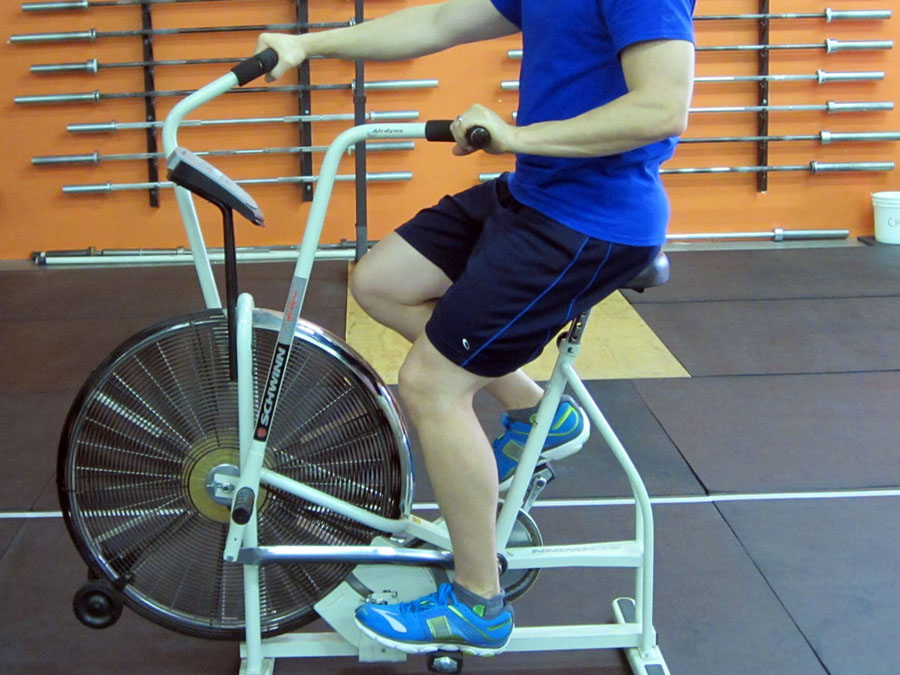
By now I’m sure you’re well aware of the benefits related to daily cardio, stretching, and resistance activities. Not only does your heart get a massive health-boost, but your entire body feels more supple and strong; your immune system is strengthened and you generally feel better. So, if you know all this, and have most likely experienced the positive effects of a daily workout routine yourself, why is it so hard to stick to a healthy pattern? Why is a daily exercise regime so difficult to maintain? The truth is, the reason we don’t stick to our guns is usually because of a busy work schedule; alternately, it could be because we can’t fit time into a hectic – and often delicate – work/family balance. We understand this predicament, and that’s why we’re offering you some useful tips on how to fit that much-needed exercise into your life, no matter the time constraints or pressures you face. Take a look!
As with most things in life, when it comes to implementing a regular, consistent daily exercise routine, perseverance is key. We know it can become difficult, that it can be tedious at times, and that you may feel like throwing in the towel, but making a commitment and sticking to it is absolutely vital. Just as you may be having a hard day at work, yet persevere because you know you need to, so too do you need to approach your workouts. Remove thoughts that tell you they’re not a priority… they are. And that’s really important to understand: your health is a priority, so treat it as such.
Now, we’re not suggesting this is by any means an easy thing to do. Sometimes these types of mind-shifts are difficult to make, but we know you can do it. Think of your workouts as a way to push your daily boundaries, to expand your skills, and as opportunities to better yourself both mentally and physically. Yes, you may be tired, you may be feeling groggy, and you may think you lack the energy to drive yourself on, but we promise that, once you start, your workout will be exceptionally rewarding both in the short term and long run. Keep at it! Here’s how:
6 Ways to Fit a Workout into Your Daily Schedule:
It’s competition time!
Whether at home or in the office, igniting your competitive spirit goes a long way in pushing you to do some exercise. Why not set up little goals to achieve? You can even challenge friends or family members to see if you can beat their times. If you really want to get creative, give yourself prizes when you finish within time or beat an opponent. It becomes a whole lot more fun to do workouts if you know that there is some sort of competitive spirit about them.
Consistency is key!
There’s a reason for the hype around habit-creation. When you are consistent in your activities, they become much easier to do and, eventually, they become part-and-parcel of your daily routine. It is no different when it comes to working out. Make a point of picking a specific time either in the morning or in the evening to do your daily exercise. Also, make sure you hold yourself accountable – stick to the chosen time and make it a constant, daily element of your day. Soon you’ll find that it has become a lot more engrained and natural; you’ll actually start missing it if you skip a day!
Personal Trainers Work
If you’re the type of person who needs a little extra motivation in order to stay on the right path, it might be worth your while to consider hiring a personal trainer. Doing so will ensure that someone other than yourself keeps an eye on your progress. If you’re not keen on a one-on-one situation, your local fitness center most likely offers community classes which will also incentivize you to exercise.
Plan Ahead
Plan your workout ahead of time. Make sure you have a detailed description of the activities you’ll be doing that week. In addition, include the foods you will be eating. It would be a mistake to assume that a workout alone will benefit you: diet plays a very important role in your health. Make sure to include more vegetables, healthy oils, fruits, and nuts into your everyday cuisine.
Workout Charts
Remember when you were at school and you were over the moon when you received gold stars? This is the same concept. Keep track of your progress, activities, workouts, and weight goals by using a chart. Achieving milestones will keep you motivated, determined, and focused.
Choose Something over Nothing
At the end of the day, choosing even small changes for a healthier body is a win-win. You really can’t lose by choosing a healthier snack, foregoing the car for a cycle or walking instead. In fact, making these small changes will boost your confidence and commitment. You’ll get rid of that feeling of guilt and regret, and you’ll start making even bigger changes down the line.
Make your health a priority and start developing a consistent, fun, daily workout routine – the above 6 tips give you the best chance of success. Even so, though, it can be difficult to get going. Knowing which exercises to do, how to do them, how much to push yourself, or even where to start, can be a tricky and frustrating place to be in. That’s why visiting a qualified, professional, hands-on physical therapist is the best decision to make.
A physical therapist will not only give you invaluable advice, help you with designing a workout schedule, and show you proper techniques, but he/she will also give you tailor-made exercises and stretches designed to support you throughout your workouts. You’ll get the answers you need in order to get going on the right foot. To learn more about physical therapists or find one in your area, visit the American Physical Therapy Association (APTA).
If you have a question that you would like featured in an upcoming blog post, please comment below or submit your question to contact@thePhysicalTherapyAdvisor.com. In case you haven’t already, be sure to subscribe to my e-mail list and YouTube channel as well as join our community on Facebook by liking The Physical Therapy Advisor!









